Food Storage
Bluebell66
8 years ago
Featured Answer
Sort by:Oldest
Comments (14)
Related Discussions
OT: Food Storage Containers : Moldy Gaskets
Comments (22)Maybe I'm missing something, but I don't really see the difference between glass and plastic containers because the lids are all plastic anyway, including the lids of my glass containers. wintercat: I have always wanted some glass containers, but they are so expensive that I have never gotten any. I believe the difference is only that the container is glass and reheating something in it will not extract plastic residue since it is glass and presumably the lid is removed. I already had a couple of those old Corning Ware mini pans (and just found three more) to use for reheating small portions. Originally I had some plastic lids for them, but they were already long gone. Perhaps some will fall into my hands some day. Until then, I just use Saran Wrap or aluminum foil for storage. "The gaskets are of a hollow core and the OD of them are very them" What does this mean? olychick: my initial assumption (still held) is that a1an is a touch typist and meant to type 'very thin' and made a duel typo into 'very them'. Admittedly, I didn't originally see that it was an 'm' rather than the 'n' that I imagined was there, but I have often found myself typing a character from the same finger but wrong hand, and have done the 'm/n' thing as well....See MoreDo you think OXO POP Containers are "Safe" for food storage?
Comments (11)Over the last couple of years I have begun to eliminate plastic storage of any kind from my kitchen. As things wore out or went missing, I turned to using my canning jars for storing things. As things evolved, I now use them for almost everything. They are great to store excess and to store leftovers. You can see everything in them, things stay very cold and the jars wash up with no residue left in them. I love them! My mom did this in the last years of her life. She had canned food out of her garden for decades and she had plenty of jars. As she got older, she had plenty of empty jars. The only problem is that now I am canning summer vegetables and my available supply is getting compromised. I have the little 1/2 pint size, to the quart size. You can even get them in larger sizes. Of course, there are some things such as left over pizza and ears of corn that need a differently shaped container. I keep a few things around for that, but mostly canning jars are what I use. I have also found that some cookware, such as covered casseroles, are great for food storage. You don't have to use them just to bake in. I will never buy any plastic storage things ever again. And, I will never replace any of them with new plastic ones. I even freeze in the glass sometimes. Although, it must be done with care with allowing room to expand and taking care when defrosting. As long as you know what you are doing, it works fine. I have a vacuum sealer that has an attachment to vacuum seal jars. That works very well for things that are time sensitive. I can also put a couple of fresh rolls or biscuits in the jars and seal them and they will keep fresh for longer. With the vacuum sealer, you can reuse the lids over and over, unlike with canning. As an added bonus I have rediscovered the joy of a "jelly jar" of iced tea in the summer. When I was growing up, that was what we used. These jars are so wonderfully versatile!...See MoreDog Food Storage
Comments (14)Great conversation. I learned something on how to store dog food (after all these years). We keep our dog food in a sterilite rubber tub but I didn't realize that the fats and oils from the food could collect at the bottom and become rancid (I wipe out the tub but sometimes the food might be in there for two months) or that the nutritional value goes down after six weeks of being open. We empty (2) 3-lb bags of dachshund food for two dachshunds into the tub. Food for thought on this one although I don't think our dogs are nutritionally deficient. http://www.dogfoodscoop.com/pet-food-storage.html @jim mat ever consider that the powdered detergent leeched into the plastic bucket which then will leech back into your dry kibble?...See MoreFood storage in wine cooler?
Comments (1)Thanks….there is info on the web lists veggies such as lettuce, zucchini , celery, squash, (but not strong smelling produce like onions, garlic) can be stored. Also - olive oil will benefit from cool storage vs a shelf in pantry. Cheese, and some fruits (either after ripening or immediately) can be stored. I’m curious to know if people have used space in their wine fridge this way…....See Morewritersblock (9b/10a)
8 years agoBluebell66
8 years agograinlady_ks
8 years agowritersblock (9b/10a)
8 years agograinlady_ks
8 years agowritersblock (9b/10a)
8 years agolast modified: 8 years agoartemis_ma
8 years agoartemis_ma
8 years ago
Related Stories
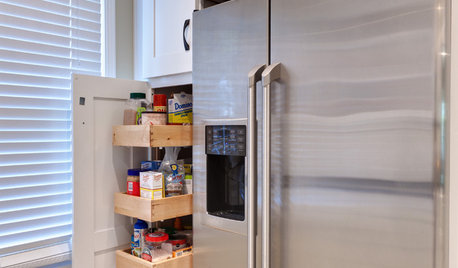
KITCHEN STORAGEPantry Placement: How to Find the Sweet Spot for Food Storage
Maybe it's a walk-in. Maybe it's cabinets flanking the fridge. We help you figure out the best kitchen pantry type and location for you
Full Story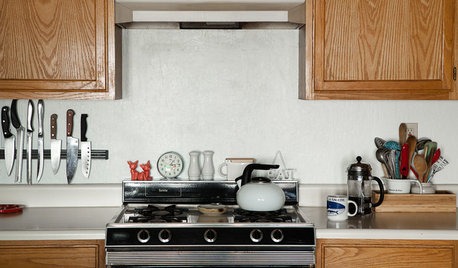
KITCHEN DESIGNDeliciously Simple: Food Photographer Warms Up a Rental Kitchen
See how a San Francisco cook and blogger makes her small kitchen shine
Full Story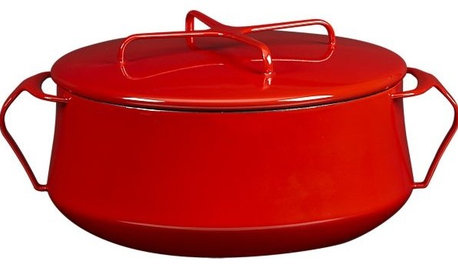
PRODUCT PICKSGuest Picks: Oven-to-Table Food Service
Serving food in the same dish it was cooked in means more time with guests and less time cleaning up
Full Story
HOLIDAYSShow Us Your Party-Time Food and Drink Station
Entertaining season is upon us, and we want to see photos of how you keep guests refreshed
Full Story
LIFEYou Said It: ‘Art Is a Lot Like Food’ and Other Houzz Quotables
Comments, advice, popular photos, lessons and spectacular views from this week
Full Story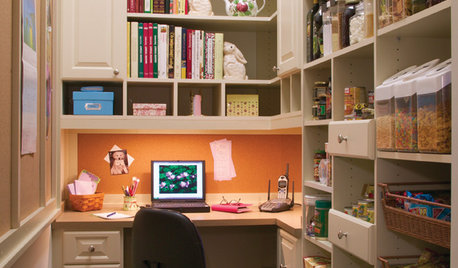
KITCHEN DESIGN11 Ways to Wake Up a Walk-in Pantry
Give everyday food storage some out-of-the-ordinary personality with charismatic color or other inspiring details
Full Story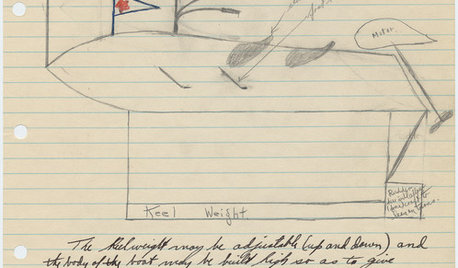
Sketches of Earl S. Tupper’s Pre-Tupperware Inventions
See the early concepts Tupper worked out before striking it big with his plastic food storage containers
Full Story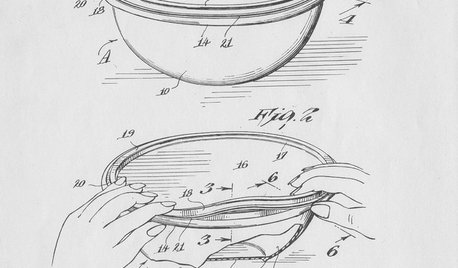
FEATURESHow Tupperware’s Inventor Left a Legacy That’s Anything but Airtight
Earl S. Tupper — and his trailblazing marketing guru, Brownie Wise — forever changed food storage. His story is stranger than fiction
Full Story
INSIDE HOUZZInside Houzz: A Walnut Wall of Storage Opens Up a Kitchen
A 30-foot wall of storage frees up cooking areas and counters for food prep and entertaining
Full Story




looney35905